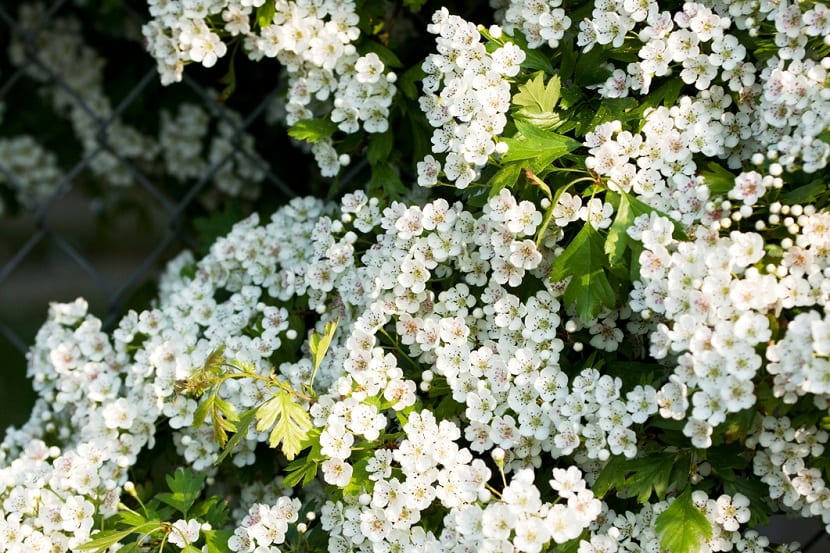
Hawthorn is popularly known as hawthorn. It belongs to the Rosaceae family and can be found in Europe, North Africa, West Asia and North America. As we can see, their distribution is quite wide and in many of these named areas they also have numerous varieties.
Thanks to its thorns on the branches and its pleasant white flowers, the hawthorn has been given various functions such as, for example, natural divider to hold livestock or as hedges in fields. Do you want to know more about hawthorn?
Hawthorn characteristics
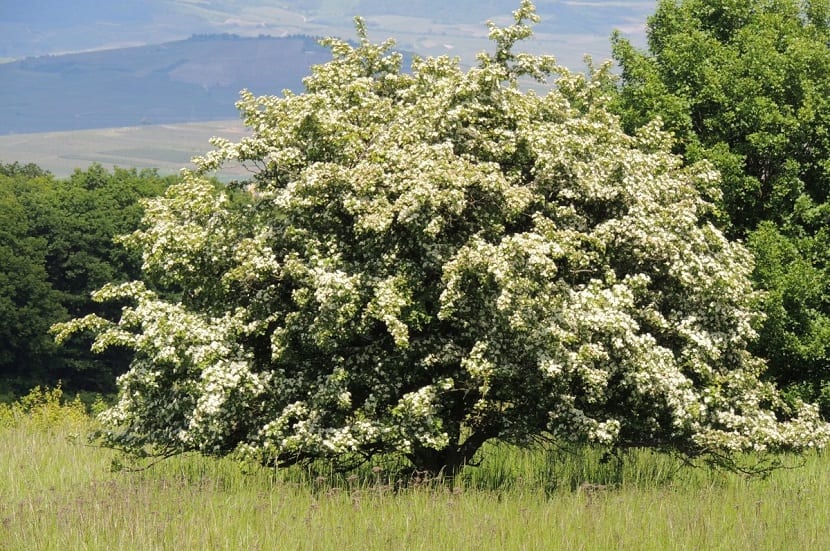
The scientific name of hawthorn is Crataegus monogyna. Its common name can be both hawthorn and hawthorn. It can adopt the typical characteristics of a tree or also of a bush with extensive foliage. The leaves of the hawthorn are deciduous. This plant can grow to about 10 meters high. On the stem it has a thicker bark with orange cracks. The stem is usually short and in the branches that are spreading in a multiple way, the thorns are distributed.
The leaves are lobed and in some varieties they can be more than 4 centimeters long. They usually have a blackish green color on the upper surface and a pale green on the underside.
This tree blooms during the spring and its inflorescences are corymbs that gather between 5 and 25 small flowers together. The flowers are barely 1 centimeter in diameter and are provided with 5 intense white petals where numerous red stamens contrast. Although very soft, the flowers offer a delicate fragrance.
Regarding the fruits, this plant produces very tiny reddish berries (only one centimeter in length) that resemble cherries. These berries are the food of many species of birds. The way this plant expands and spreads is through animals. Inside the fleshy part of the berries, they have a seed. When the birds eat the berries, in their excrement is the seed that will fall in a different place than the one the bird ate and can reproduce and spread. This process is called zoocora.
What are the uses of hawthorn or hawthorn?

As mentioned before, thanks to the thorns on its branches and its white flowers, it has been given various uses. The main use that is given is of hedge function in agricultural fields. By having branches of thorns they serve so that livestock and people do not pass through certain areas. In this way, hawthorn acts as a natural barrier.
On the other hand, other varieties of hybrid species of hawthorn have also been developed that serve as ornamentation for gardens. One of these varieties known as Paul's Scarlet has beautiful dark pink double flowers.
Properties of hawthorn
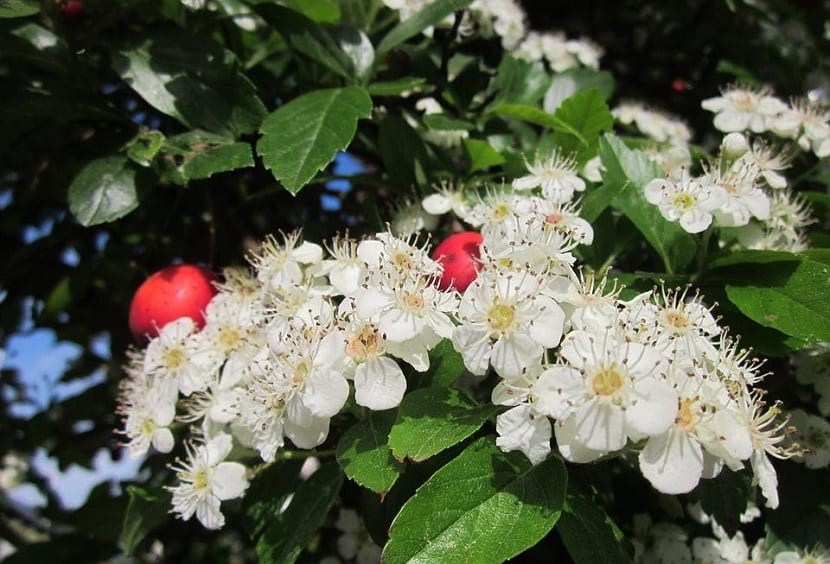
This plant has some health benefits. These are properties that help dilate the blood vessels in the coronary arteries. Thanks to this property, This plant has been used for many years to combat or prevent heart disease.
The properties of hawthorn promote blood circulation, the ability of the heart to beat and pump more blood and, in general, it helps the entire circulation of the body to work better.
It also helps prevent the chances of suffering a heart attack by facilitating blood flow. It is ideal for people suffering from arrhythmia or tachycardia, since it collaborates in the regularization of the heart rhythm. Mild heart failure can be mitigated with the use of this plant thanks to its cardiotonic properties and as a secondary result of this, it collaborates in improving those ailments that derive from this insufficiency, such as, for example, fluid retention.
Hawthorn also has different minerals such as calcium, potassium and magnesium. These minerals are associated with blood pressure and, therefore, are excellent for regulating it in those who suffer from hypertension or hypotension.
Hawthorn also has properties that help fight stress and nerves just like valerian. In this way we prevent the body from being restless and causing insomnia, anxiety, bruxism, etc.
Hawthorn flowers have pectins. They act as a powerful emollient that helps soften the respiratory tract. Softens the throat and improves the functioning of the airways. The bark of the hawthorn has functions that prevent fever.
What climate and soil is suitable for growing hawthorn?
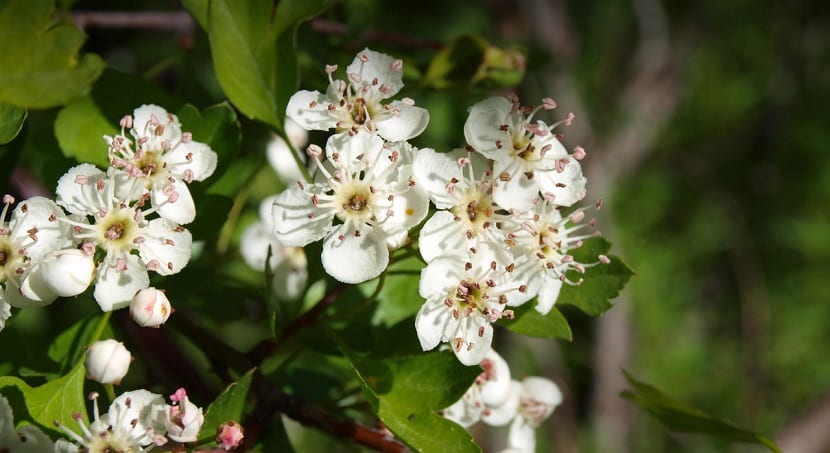
If we want to grow hawthorn in our garden, we have to bear in mind that sooner or later it will exceed other plants in size. Hawthorn requires full sun conditions for its proper growth. Therefore, we must plant it in the areas of our garden that have a greater number of hours of sun.
When planting it, as its parts are still fleshy and it is not woody, it should be done when there are no temperatures or very high or very low, such as in autumn or spring.
As for the ground, we must bear in mind that it needs a fairly humid soil and that it has good water drainage. This tree is usually well adapted to various conditions and is more or less resistant to drought. To prevent them from drying out or not growing properly, we have to make sure that the soil where we sow it is not compacted or clayey with little porosity.
If we live in places with low humidity, we can put a padding on them around that allows it to maintain adequate humidity conditions at its roots at all times. In this way, we also reduce the amount and frequency of irrigation.
How should we pay and water it?
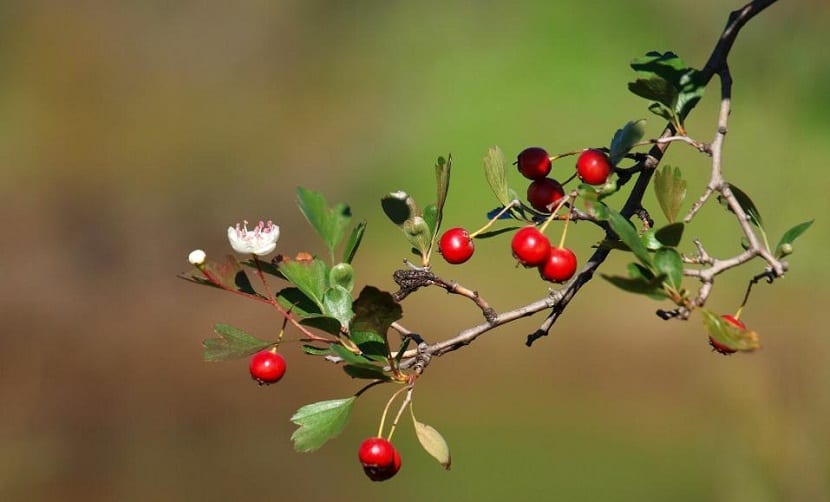
Hawthorn is very easy to grow. It is only necessary to bear in mind that the soil must be humid, have good drainage and not let it dry out at any time. However, the subscriber is more demanding, especially in the flowering and fruiting season. At the end of winter and in spring we must provide an appreciable amount of organic matter around the trunk if we want it to develop properly.
To sow hawthorn we have to be very patient. As mentioned before, hawthorn berries have a single seed inside, and this it can take up to 18 months to germinate. One thing we can do to increase the chances of success when planting the seeds is to soak them in warm water for a while before putting them in the seedbed or directly on the site. Another way to multiply hawthorn is through stakes that we will prepare previously at the end of spring.
As has been observed, hawthorn has many quite good healing and regulatory properties and quite useful uses, as well as being very easy to grow. Now you just need to have a hawthorn in your garden.
Thank you German for instructing me about a beautiful tree that I discovered many years ago in my runs towards the pre-mountain range, Cajon del Maipo, Andes, there are not many there, but its beauty captivated me, its flowers, its berries, its color, I love them all. I think that the habitat here is not very favorable because they do not multiply much. I do not believe myself. I tell you that I live in Santiago de Chile metropolitan region Puente Alto and I love my maip drawer
Hello, I am from Costa Rica, in my country these plants do not exist. Is there any chance you can mail me seeds? and if so, what would the cost be? I await your answer, greetings!
Hello Dinia.
I'm not sorry. We are not dedicated to buying and selling.
I recommend you look in online stores or on ebay.
A greeting.
Hello,
Does hawthorn have a similar one that bears pink flowers? it is a tree that abounds in the paths of Esquel. Thanks. Cecilia
Hi Cecili.
No, hawthorn (Crataegus monogyna) only produces white flowers 🙂
A greeting.